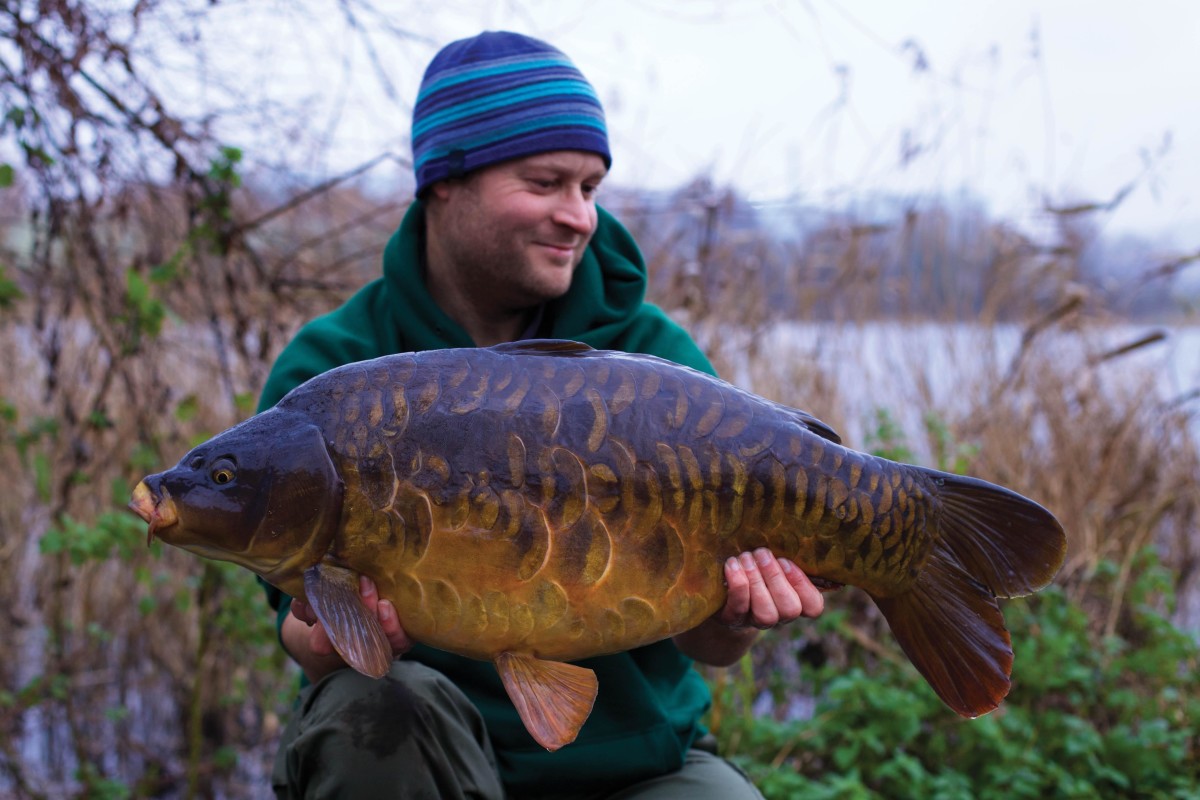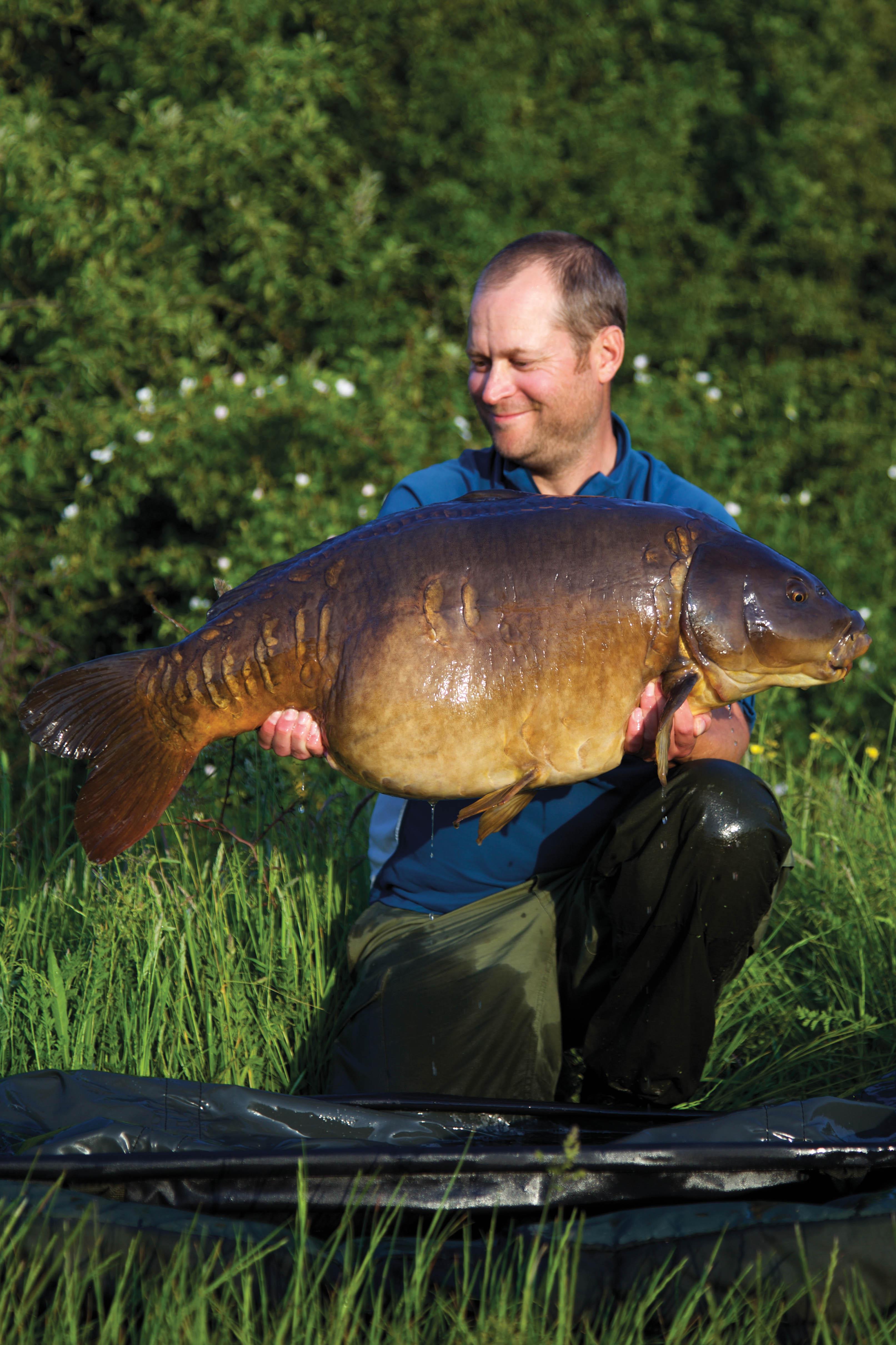
Bait According To... Aaron Copp
Aaron extolls the virtues of a good-quality bait. It’s not always, though, a case of feeding it in any quantity, as there’s not always the need…
The bait that changed everything for me was one I began using after my first exposure to Mainline Baits. It was way back in 1996, when I was fishing Darenth Big Lake in Kent—a renowned water at the time. Grange was the bait in question, with Milky Toffee flavour. I had some stellar results with that bait, although I’d also fast-forward around 10 years from that time to when I fished a days-only estate lake in Essex. That’s when I really had my eyes opened to just how powerful a great bait can be. It was early autumn, and results-wise, whilst using a particle approach, I had been holding my own on the tricky venue. One Saturday I witnessed one of the other regulars, a chap who up until that stage had not caught a great deal from the lake, fish single hookbaits out to an area he had pre-baited the previous evening, go on to catch four in a day. That was unheard of at the time. It turned out that he had managed to get hold of a new test bait from Mainline: Cell. Over subsequent years I have developed total faith in Cell. It’s a bait that has been a critical element of my approach when I’ve caught carp from some very tricky venues indeed.
The game-changing bait tweak, method or approach that altered everything for me was not using regular, round boilies. Now, before I elaborate, if a venue is full of nuisance fish such as tench and bream, then you’ll likely find me fishing whole 18 or 20mm boilies, as I do my best to avoid them. But if they are not an issue, then breaking or chopping up your bait, I believe, creates what perhaps could be described as a more natural baiting situation, given that most of a carp’s natural diet is made up of small items. Over the years, I have found that breaking up baits can speed up the creation of a feeding situation, and this obviously increases your chances of getting a bite.
The last bait-related item I bought and loved would have to be my RidgeMonkey Advanced Boilie Crusher. I am sure it’s been said before, but it really is amazing. Before owning one, whenever I wanted chopped up bait, I would either do it by hand, or use a Korda Krusha, which I still carry for small amounts, it being so lightweight and compact. In a situation where I want to use a significant quantity of chopped bait, however, the RidgeMonkey Crusher speeds up the process massively, and it’s now not the time-consuming chore it once was.
A bait-related item I would never part with is my baiting needle, as I would be pretty screwed without one!
Any future bait item on a wish list would probably be there to my detriment. I am generally not one to jump on the next big thing, be it a rig, or perhaps a bait. Instead, I generally stick to tried-and-tested tactics and focus on location. That does mean, though, that I might miss out on the chance to find out just how effective a new bait might be on a water, like the situation I described with Cell. I hear whispers that Mainline are developing a new fishmeal bait, and that’s something that is on my wish list, especially as I’m planning to fish a water where fishmeals have dominated in the past.
A bait I long to use is one I never got around to using back in the day, and that’s Mainline’s Maple-8. It had a good reputation and I know just how superb maple is as an attractor, so if that was ever rereleased or tweaked, then that’s a bait I would consider using.

The best piece of bait-related advice I’ve been given in the past year…? I don’t tend to seek advice, but instead, when I am angling try to be as observant as possible, and that helps me build a picture of what is happening on the venue. Take this last winter, almost 90 per cent of the bites I received were at night. Now, you could come to the obvious conclusion that the carp were generally feeding only at night, but from what I’d observed, that wasn’t the case, it was just that my baiting situation was generating night action. To elaborate, not everyone who fishes the venue has a night permit, and the vast majority of the days-only anglers were fishing singles, or over very little bait. The interesting part was that they were the anglers who were getting the majority of the daytime bites. Given that I was fishing over a baited area, it seemed that the carp in the crystal-clear water weren’t gaining any real confidence when feeding on my bait until darkness fell. Had the lake been quieter, I could have maybe taken advantage of the situation, i.e. fished singles in other areas of the lake during the day, and my baited spot at night. The lake was way too busy for that to be realistic—if I’d have moved, I wouldn’t have been able to return to the same area in the evening. My baiting approach led to the capture of some lovely big commons, so in this particular situation, I didn’t change what I was doing.
My preferred baiting approach nowadays really depends on the venue I’m fishing. With significant variables, such as stocking density, lake size, and angling pressure to consider, to be consistently successful, I strongly believe that you need to be able to adapt to each, possibly unique angling situation. In the past, when fishing large lakes like Savay or Lockwood Reservoir, almost all my captures have come about after I’ve concentrated on location, and have then fished over very little bait. Yet, at the opposite end of the spectrum, on a Kent gravel pit I fished a couple of years back, a water that held a much higher stock than the first two venues mentioned, I established a bait: chopped Cell. At times, multiple bites came to three rods fished on one baited area.
In my bait bag you will always find 12mm balanced wafters that match whatever Mainline boilie I am using, so generally they’ve been Cell over the last few years.
My preferred hookbait colour varies. Bright single hookbaits definitely have their place, but if I am targeting big, old carp, then I want my hookbaits to match my free offerings—I can think of one tricky Colne Valley venue when that was really drummed into me. Size-wise, you will generally find me fishing a relatively small hookbait, one of 12 to 14mm.
For my free food-bait I generally prefer to use smaller, irregular-shaped offerings.
My best bait edge is, without doubt, establishing a bait on a venue, and all the better if that is an all-season bait. The bait you introduce late spring and into summer, will pay real dividends come autumn and winter, when often the carp are at, or close to their peak weights.





